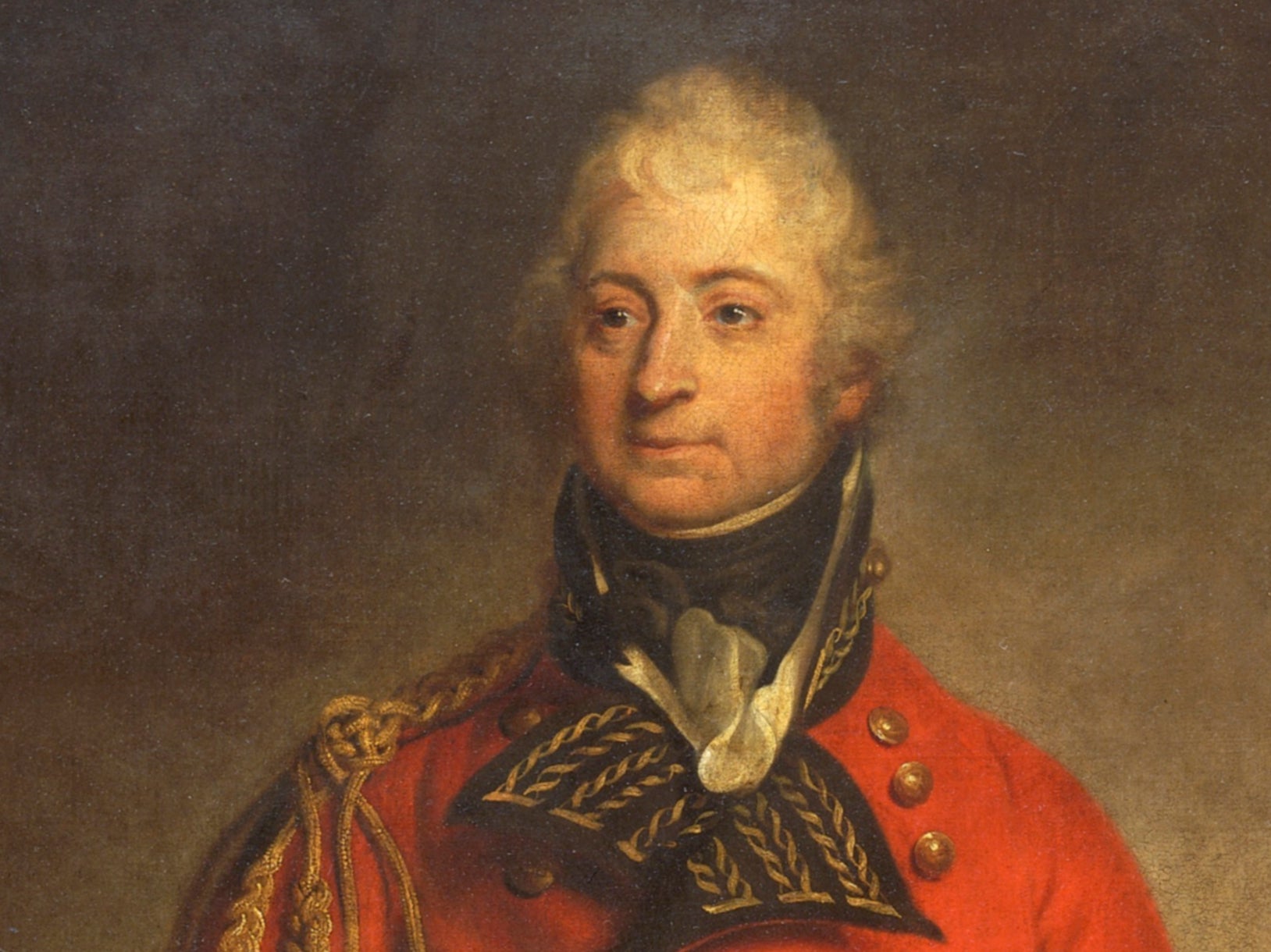Thomas Picton: Cardiff museum takes down portrait of slave owner
Painting of disgraced former governor of Trinidad to be replaced by ‘celebratory portrait’ of worker

Your support helps us to tell the story
From reproductive rights to climate change to Big Tech, The Independent is on the ground when the story is developing. Whether it's investigating the financials of Elon Musk's pro-Trump PAC or producing our latest documentary, 'The A Word', which shines a light on the American women fighting for reproductive rights, we know how important it is to parse out the facts from the messaging.
At such a critical moment in US history, we need reporters on the ground. Your donation allows us to keep sending journalists to speak to both sides of the story.
The Independent is trusted by Americans across the entire political spectrum. And unlike many other quality news outlets, we choose not to lock Americans out of our reporting and analysis with paywalls. We believe quality journalism should be available to everyone, paid for by those who can afford it.
Your support makes all the difference.A portrait that celebrated the life of Welsh slave owner Sir Thomas Picton has been removed by National Museum Wales after more than 100 years on display.
Picton was celebrated in the painting as a hero who died at the Battle of Waterloo, despite him abusing the slaves he owned when he was the governor of Trinidad.
The decision to remove the portrait was made as part of Reframing Picton - a youth-led initiative involving Amgueddfa Cymru and community partner the Sub Sahara Advisory Panel (SSAP) - and will mean the painting will be put in storage.
Two artists with Trinidadian roots have been commissioned to reinterpret his legacy to give more context about his life.
The portrait has been replaced with another titled ‘Hedger And Ditcher: Portrait Of William Lloyd’ by Dutch artist Albert Houthuesen, who was fascinated with the working life of the colliers in Trelogan, Flintshire.
The removal of Picton’s portrait comes after a series of large-scale Black Lives Matter protests across the UK in 2020 and a decision by Cardiff City Council to take down a marble statue of him from City Hall this year.
“This is another important step for Amgueddfa Cymru in examining our national collections and thinking about who we display in our Faces of Wales gallery and why,” Kath Davies, director of collections and research at Amgueddfa Cymru, said.
“This project replaces one artwork, which assigns great importance to someone whose actions as governor of Trinidad even at the time were seen as cruel, with a celebratory portrait of a worker - someone we could today consider to be a hero.”
She added: “Looking ahead, Amgueddfa Cymru will be creating educational resources on the history and achievements of communities experiencing racial inequalities within our society.
“These will support the recently announced changes to the curriculum by the Welsh government.”
The painting of Picton was gifted to the museum in 1907 by the Earl of Plymouth but it is believed to have also been hung in the Royal Academy in London in 1816.
When the vote on removing the statue of Picton from Cardiff’s City Hall was passed earlier this year, a council motion noted that the slave owner’s behaviour had been “abhorrent” even by the standards of his era.
“Heightened awareness about the history of slavery must include a reassessment of the regard in which we hold Picton, and many others who were actors and beneficiaries of slavery,” the motion read.
“In hindsight it was an error to have included Picton as an option in the 1916 public vote, and an error that he had not been removed sooner.”
Fifty seven councillors voted for the statue to be removed, while five voted against and nine members abstained.
Additional reporting by PA
Join our commenting forum
Join thought-provoking conversations, follow other Independent readers and see their replies
Comments